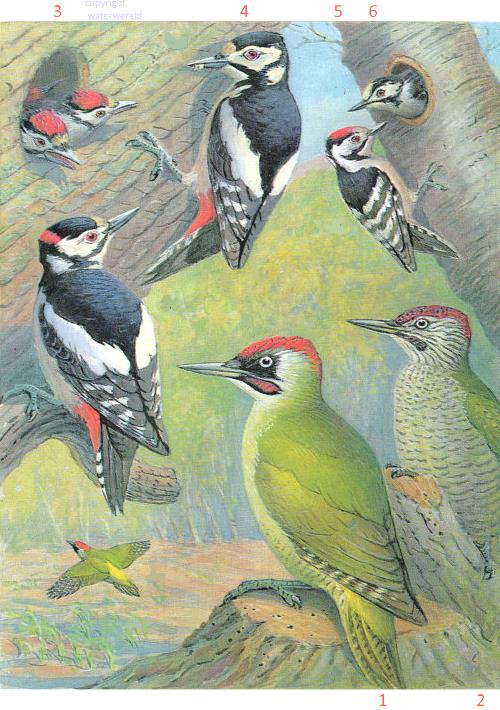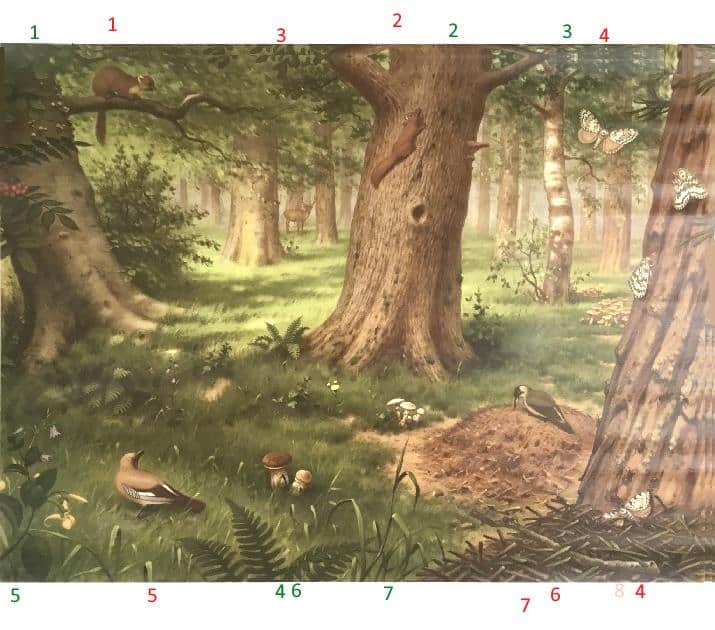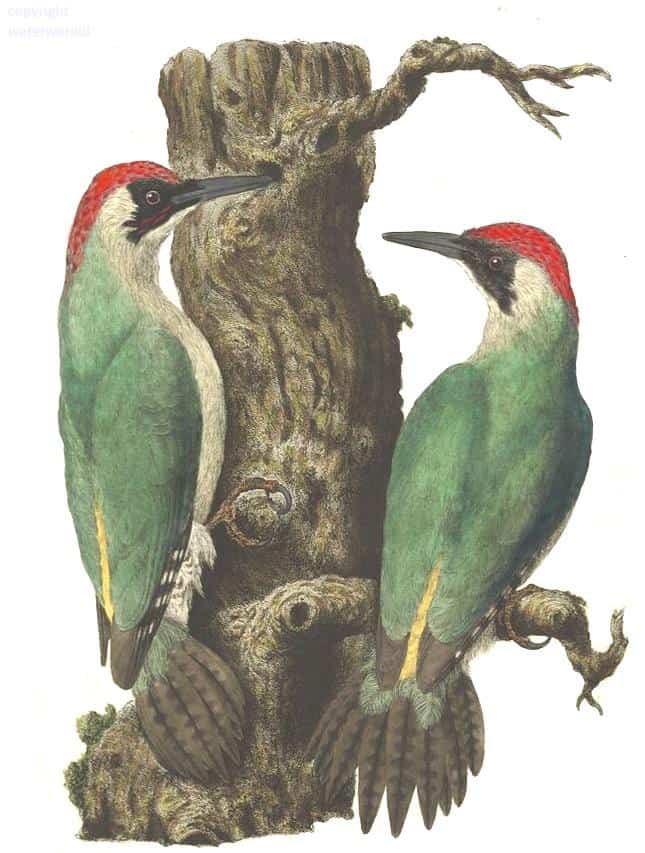European green woodpecker
This is an easy to recognize European bird : it is mostly green colored with a red crown and nape.
yellow-green bird is the largest woodpecker
The belly is light yellow. Green woodpeckers are often found in pairs or family groups.
bird song or call
The call of the green woodpecker is more often heard than seen
drumming on trees
They rarely drum and only on softwood trees (mostly conifers), and the sound is not as loud or resonant as that made by the other the greater and lesser spotted woodpeckers. Drumming is only used for excavating their nest holes in trees, not for hunting insects.

Feeding on ants
Green woodpeckers survive on a diet of insects and have a particular fondness for ants. Most of the time they spend hopping on the ground, looking for ant nests. They plunder the nests or hills of wood ants, adult, larvae and eggs, and return the next day to that ant hill to continue feeding. Other food taken includes a variety of insects, and on rare occasions, reptiles such as small lizards.It’s rare for a green woodpecker to visit a feeder or bird table, but a mown lawn will attract them. Winter time is the hardest time: the green woodpicker is not able to find food after snowfall.
1, 2 European green woodpecker or Picus viridis, M and young
3,4 Great spotted woodpecker or Dendrocopos major, M,F, young
5,6 Lesser spotted woodpecker or Dryobates minor or Dendrocopos minor, M and young

1 European pine marten (Martes martes), 2 Eurasian red squirrel (Sciurus vulgaris ,3 red deer Cervus elaphus, 4 black arches or nun moth or Lymantria monacha, 5 Eurasian jay or Garrulus glandarius, 6 7red wood ant mest or formica rufa
1 the European beech or common beech or fagus sylvatica, 2 common oak, pedunculate oak, European oak or Quercus rubor, 3 Betula pendula—silver birch 4Polypodium vulgare, the common polypody, 5Boletus edulis (English: penny bun, cep, porcino
5 Klokjesgentiaan (Gentiana pneumonanthe)
8
-
- eekhoorntjesbrood,
9
-
- porceleinzwam,
10
- echte honingzwam

